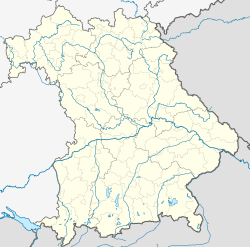Fellheim
In today's world, Fellheim is a relevant topic that has captured the attention of millions of people around the world. Whether due to its impact on society, its influence on popular culture or its importance in academia, Fellheim has become a topic of general interest that has generated heated discussions and passionate debates. From its emergence to its evolution today, Fellheim has left an indelible mark on history, making it a topic worth exploring in depth to understand its true scope and meaning in today's world.
Fellheim | |
|---|---|
Location of Fellheim within Unterallgäu district  | |
| Coordinates: 48°5′N 10°9′E / 48.083°N 10.150°E | |
| Country | Germany |
| State | Bavaria |
| Admin. region | Schwaben |
| District | Unterallgäu |
| Municipal assoc. | Boos, Bavaria |
| Government | |
| • Mayor (2020–26) | Reinhard Schaupp[1] |
| Area | |
• Total | 5.08 km2 (1.96 sq mi) |
| Elevation | 566 m (1,857 ft) |
| Population (2023-12-31)[2] | |
• Total | 1,154 |
| • Density | 230/km2 (590/sq mi) |
| Time zone | UTC+01:00 (CET) |
| • Summer (DST) | UTC+02:00 (CEST) |
| Postal codes | 87748 |
| Dialling codes | 08335 |
| Vehicle registration | MN |
| Website | www.vg-boos.de |
Fellheim is a municipality in the district of Unterallgäu in Bavaria, Germany. The town has a municipal association with Boos, Bavaria.
History
Early history
Fellheim is located along the former fortification line of the Danube–Iller–Rhine Limes, on the right side of the Iller between Kellmünz and Memmingen. After several changes in ownership, the Reichlin von Meldegg barons ultimately took ownership of Fellheim beginning on January 25, 1555, following the transfer of the feudal letter from the Princely Abbey of Kempten. Construction of their castle, Schloß Fellheim, began two years later in 1557. In 1620, the barony was granted the right to exercise high justice (Blutbann).
During the Thirty Years' War, the village was completely devastated and, from 1636 to 1643, no one lived in Fellheim. Only one farmer returned home following the war and the local lord, who had fled to Switzerland, returned to Fellheim in 1643. To increase the population, Baron Phillip Bernhard von Reichlin-Meldegg settled five Jewish families in Fellheim in 1670.
With the implementations of the Confederation of the Rhine in 1806, Fellheim became part of Bavaria. Subsequent administrative reforms in Bavaria established the current municipality of Fellheim in 1818.
References
- ^ Liste der ersten Bürgermeister/Oberbürgermeister in kreisangehörigen Gemeinden, Bayerisches Landesamt für Statistik, 15 July 2021.
- ^ Genesis Online-Datenbank des Bayerischen Landesamtes für Statistik Tabelle 12411-003r Fortschreibung des Bevölkerungsstandes: Gemeinden, Stichtag (Einwohnerzahlen auf Grundlage des Zensus 2011).


